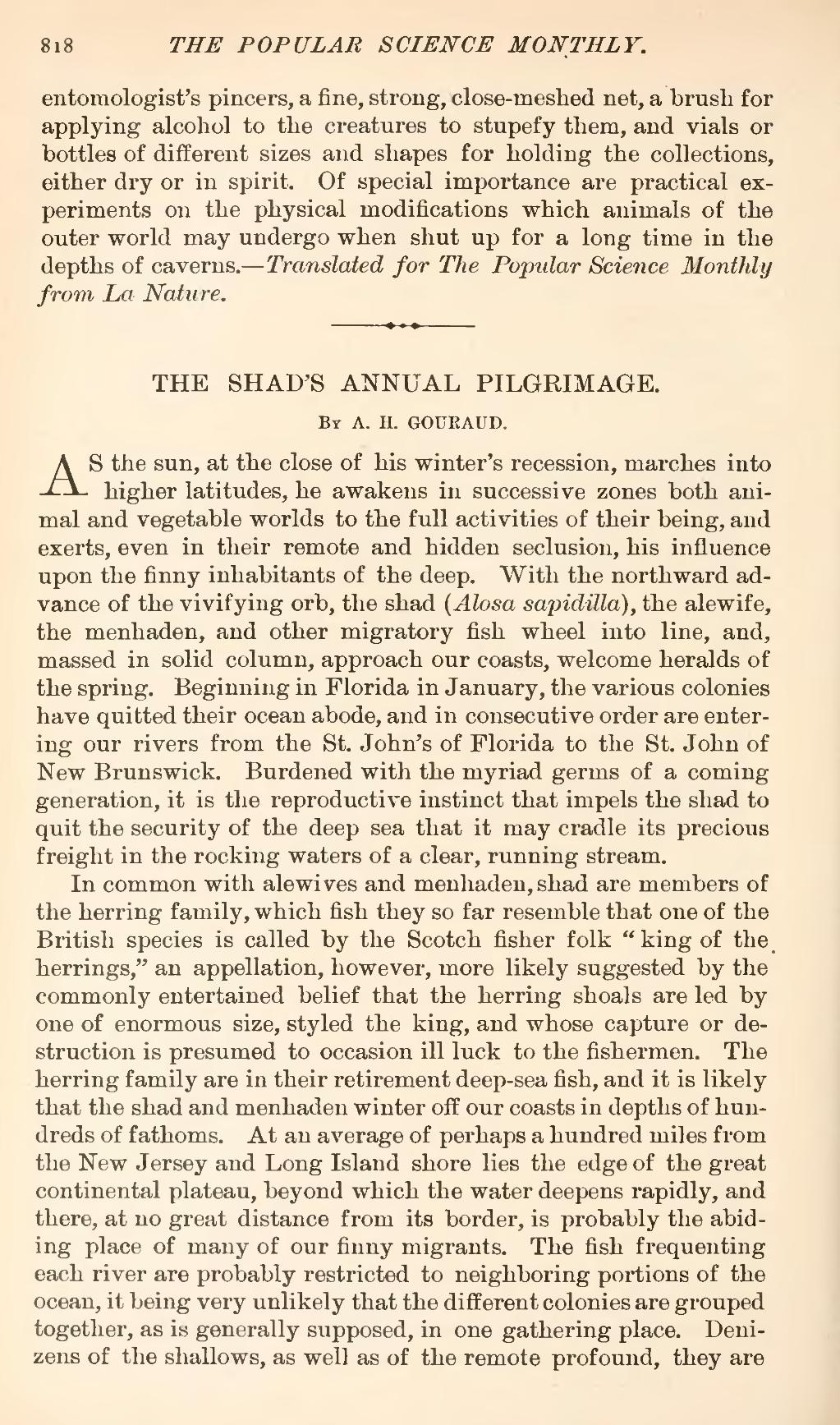entomologist's pincers, a fine, strong, close-meshed net, a brush for applying alcohol to the creatures to stupefy them, and vials or bottles of different sizes and shapes for holding the collections, either dry or in spirit. Of special importance are practical experiments on the physical modifications which animals of the outer world may undergo when shut up for a long time in the depths of caverns.—Translated for The Popular Science Monthly from La Nature.
| THE SHAD'S ANNUAL PILGRIMAGE. |
By A. H. GOURAUD.
AS the sun, at the close of his winter's recession, marches into higher latitudes, he awakens in successive zones both animal and vegetable worlds to the full activities of their being, and exerts, even in their remote and hidden seclusion, his influence upon the finny inhabitants of the deep. With the northward advance of the vivifying orb, the shad (Alosa sapidilla), the alewife, the menhaden, and other migratory fish wheel into line, and, massed in solid column, approach our coasts, welcome heralds of the spring. Beginning in Florida in January, the various colonies have quitted their ocean abode, and in consecutive order are entering our rivers from the St. John's of Florida to the St. John of New Brunswick. Burdened with the myriad germs of a coming generation, it is the reproductive instinct that impels the shad to quit the security of the deep sea that it may cradle its precious freight in the rocking waters of a clear, running stream.
In common with alewives and menhaden, shad are members of the herring family, which fish they so far resemble that one of the British species is called by the Scotch fisher folk "king of the herrings," an appellation, however, more likely suggested by the commonly entertained belief that the herring shoals are led by one of enormous size, styled the king, and whose capture or destruction is presumed to occasion ill luck to the fishermen. The herring family are in their retirement deep-sea fish, and it is likely that the shad and menhaden winter off our coasts in depths of hundreds of fathoms. At an average of perhaps a hundred miles from the New Jersey and Long Island shore lies the edge of the great continental plateau, beyond which the water deepens rapidly, and there, at no great distance from its border, is probably the abiding place of many of our finny migrants. The fish frequenting each river are probably restricted to neighboring portions of the ocean, it being very unlikely that the different colonies are grouped together, as is generally supposed, in one gathering place. Denizens of the shallows, as well as of the remote profound, they are

